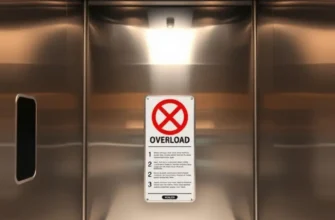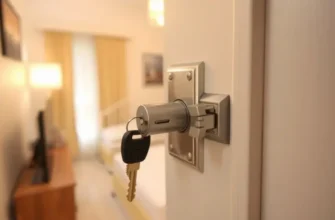Every renter hopes to never face the terrifying reality of an apartment fire, but the truth is that preparation can make all the difference in ensuring safety. An effective fire escape plan is an essential part of your home safety strategy, providing peace of mind and a clear course of action should the unthinkable happen. Whether you reside in a cozy studio or a spacious two-bedroom, knowing how to respond in a fire emergency can save lives. With this guide, you’ll discover simple steps to create a practical, easy-to-follow fire escape plan tailored to your apartment. This plan not only keeps you and your household safe but also reinforces the importance of communication among family members or roommates. By focusing on safety, security, and hassle-free maintenance solutions, we aim to equip you with everything you need to mitigate potential risks, ensuring a secure living environment while navigating the realities of apartment life across the U.S.
Understanding Your Space: Map Your Apartment

Creating an effective fire escape plan begins with an intimate understanding of your apartment’s layout. Mapping your space visually equips you with the knowledge to plan precise and efficient escape routes. Follow these steps to chart a map and identify all possible exits, which may include doors, windows, and stairwells.
Step 1: Gather the Essentials
Start with the basic tools: a notepad, measuring tape, and a drawing app or paper. Take thorough measurements of each room, noting the size and location of windows and doors. This groundwork provides a clear foundation for your map.
Step 2: Identify Key Features and Exits
Next, walk through your apartment to identify all possible exits. Note every door that leads outside and every window that can serve as a secondary exit. Ensure that windows are easily accessible and not painted or nailed shut. Factor in balconies as potential escape routes, especially if you reside on a higher floor, but be cautious of balcony safety which you can learn more about here.
Step 3: Locate Safety Devices
Document the position of smoke detectors throughout the apartment. These devices are your first alert in case of a fire. Ensure they are functional and their batteries are up to date. Locate any fire extinguishers in your home, typically found in kitchens, and verify they are easily reachable.
Step 4: Evaluate Common Hazards
While mapping, identify potential hazards that could obstruct your escape routes. Common dangers include overcrowded spaces, heavy drapery near windows, or cluttered hallways. Remove these obstacles to ensure a clear pathway during an emergency.
Step 5: Use Floor Plans if Available
If your building provides a floor plan, use it as a reference tool. Compare it with your survey to spot additional or missed exits. This official document might also outline safety exits not immediately visible in tenant areas.
Step 6: Simulate Emergency Scenarios
Conduct a walkthrough using your map to simulate various escape scenarios. Practice identifying different routes under the hypothetical condition that one exit might be blocked. This exercise reinforces the practicality of your mapped routes.
By the end of mapping, you’ll have a detailed diagram of your apartment’s layout, highlighting every conceivable exit in the event of a fire. Regularly reviewing and updating this plan is crucial as room arrangements or building renovations change. This proactive effort ensures that you and your loved ones prioritize safety and security in your rental home.
Creating Your Escape Strategy: The Dos and Don’ts

When faced with a fire emergency, having an escape strategy is essential for ensuring safety. Start by familiarizing yourself with the nearest and most viable exits in your apartment building. Avoid elevators as they may malfunction or become trapped during a fire. Instead, focus on stairwells or emergency exits marked for evacuations.
Staying calm is paramount. Panic can cloud judgment and slow down your response time. Before an emergency arises, designate a meeting point outside the building where all occupants, including family and roommates, will reconvene. This ensures everyone can be accounted for and helps first responders assess the situation accurately.
For pet owners, part of your strategy should involve ensuring pets are quickly accessible. Practice securing pets in carriers or attaching leashes nearby so you can expedite their evacuation. Consider preparing an emergency bag with essentials like food, medications, and important documents.
Practice makes perfect. Conduct fire drills regularly to familiarize everyone with the escape plan. These drills can highlight unforeseen obstacles and allow adjustments to be made accordingly. Make sure to test different scenarios, such as blocked exits, so you can adapt on the fly if needed.
Updating your escape plan is crucial. Changes in occupancy, such as new roommates or pets, warrant a reevaluation of your procedures. Regular updates ensure that everyone understands their role and can exit quickly during an emergency.
Finally, one often overlooked aspect is maintaining clear paths to exits. Avoid clutter around doorways and hallways, and ensure everyone is aware of the importance of organization to facilitate quick evacuation. Clear access ensures no one trips or gets slowed down, crucial seconds that can make all the difference.
Creating a robust fire escape plan requires thoughtful preparation and consistent practice. By focusing on these strategies, you prepare yourself and your cohabitants to respond effectively under pressure, safeguarding lives and minimizing potential harm.
Final words
Creating a fire escape plan for your apartment is not just a safety measure; it is an essential part of living responsibly as a renter. By thoroughly understanding your layout and preparing a well-thought-out strategy, you empower yourself and your household to take swift action in case of an emergency. Regularly revisiting and practicing this plan fosters a proactive attitude towards safety, ensuring that everyone knows what to do and makes you feel secure in your home. Your well-being in the event of a fire is invaluable, and the time invested in this preparation will provide peace of mind for you and those you care about. Remember, being prepared is synonymous with being safe.









